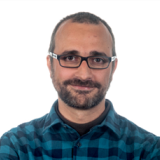Selected Papers from the Future Paths and Needs in Wave Modelling Workshop
A special issue of Journal of Marine Science and Engineering (ISSN 2077-1312).
Deadline for manuscript submissions: closed (15 February 2020) | Viewed by 33780
Special Issue Editors
Interests: laboratory wave modelling and analysis; coupling experimental and numerical modelling; physics of steep and extreme waves; statistical modelling; experimental hydrodynamics; linear and nonlinear data analysis
Interests: hydrodynamics; stability; seakeeping; dynamics of offshore structures; offshore renewable energy; potential flow
Special Issues, Collections and Topics in MDPI journals
Special Issue Information
Dear Colleagues,
SINTEF Ocean is pleased to invite you to attend and submit a paper for our workshop “Future Paths and Needs in Wave Modelling”, to be held in Trondheim, Norway, in the 21st and 22nd of October 2019. Selected papers from the workshop will be subsequently published in this Special Issue. Contributions should focus on methods and challenges in laboratory and/or numerical modelling of ocean waves, such as, but not limited to:
- What shall be modelled
- Which are the models
- Wave calibration
- Short-crested waves
- Avoiding or reducing unwanted laboratory and numerical effects
- Validation of CFD and other models
- How experimental and numerical models should be integrated
- Applications
- Ongoing developments
- Goals for the near future
This Special Issue is intended to be a substantial and useful reference source for future research in wave modelling.
SINTEF Ocean is grateful to the Research Council of Norway for the grant provided under the FORINFRA Program (Large Scale Infrastructures), Phase III, grant 269870.
Dr. Carl Trygve Stansberg
Dr. José Miguel Rodrigues
Guest Editors
Manuscript Submission Information
Manuscripts should be submitted online at www.mdpi.com by registering and logging in to this website. Once you are registered, click here to go to the submission form. Manuscripts can be submitted until the deadline. All submissions that pass pre-check are peer-reviewed. Accepted papers will be published continuously in the journal (as soon as accepted) and will be listed together on the special issue website. Research articles, review articles as well as short communications are invited. For planned papers, a title and short abstract (about 100 words) can be sent to the Editorial Office for announcement on this website.
Submitted manuscripts should not have been published previously, nor be under consideration for publication elsewhere (except conference proceedings papers). All manuscripts are thoroughly refereed through a single-blind peer-review process. A guide for authors and other relevant information for submission of manuscripts is available on the Instructions for Authors page. Journal of Marine Science and Engineering is an international peer-reviewed open access monthly journal published by MDPI.
Please visit the Instructions for Authors page before submitting a manuscript. The Article Processing Charge (APC) for publication in this open access journal is 2600 CHF (Swiss Francs). Submitted papers should be well formatted and use good English. Authors may use MDPI's English editing service prior to publication or during author revisions.
Keywords
- Wave generation, calibration and analysis
- Nonlinear random and extreme waves
- Wave basin effects and mitigation
- Coupling between experimental and numerical waves






